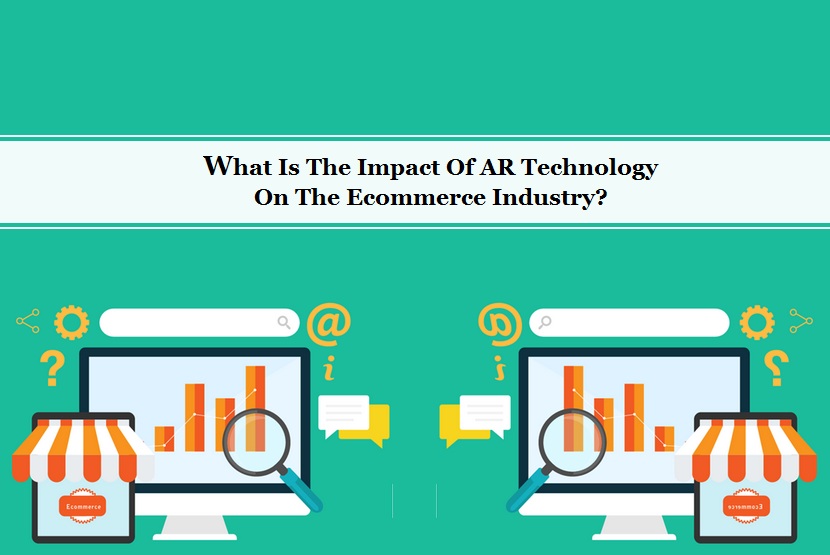Ecommerce is all matured today. It certainly has more to offer to both retailers and customers than the typical way. But the success of an ecommerce model depends entirely on an immersive purchasing experience offered to customers. There is still a huge gap between buying something by physically visiting a store and buying the same thing online, on an app or website. Many customers avoid purchasing products online just because they cannot see a product from all dimensions. They cannot feel a product to gauge its actual size. And, if they are buying cloths or others fashions accessories, they cannot try them before buying.
The existing ecommerce technology can only offer high resolution images and videos of products, but still, customers cannot see, touch, and feel products like they do when by visiting a store physically.
Consider it a key drawback of ecommerce shopping. You just cannot have an actual experience with a product until it doesn’t reach you. The delivery of the product may take from hours to days and, if you don’t like it, you have to go through a long returning process.
With these drawbacks are as yet there, the maximum number of customers continue to prefer shopping at physical stores. They say that the only conveniences in buying a product online are that they don’t have to go to buy a product and they may get some discount. But they do not want to compromise with their purchase just because of these insignificant advantages. Of course, they should not, should they?
No they don’t, especially when the technology of Augmented Reality can offer them a virtual experience of trying and touching a product similar to what a customer does in an offline store. The AR technology has now ready to support ecommerce to deliver an enhanced shopping experience.
The global e-commerce industry has spotted the potential of the AR technology. Businesses are experimenting on implementing augmented reality solutions to their ecommerce offerings so that the gap between offline and online shopping experience can be bridged.
Let’s see some practical examples on how companies around the world are using the AR technology to provide more engaging and encouraging ecommerce experience to their customers.
IKEA Place – An AR App For Augmenting Furniture In A Space
IKEA Place is the new augmented realty app by IKEA, a Swedish furniture retailer. Earlier the company had VR app scanning and augmenting the items published in its catalog known as IKEA Catalog. But now, new app does not require scanning the Catalog. Built on ARcore, the app lets customers augment and place IKEA products in their space and have an experience of its look-and-feel, dimension, and its aptness with their home/office environments. The app is available on both Android and iOS devices.
When using the IKEA Place app, customers have to see spaces through its camera’s view point, mark that area, and then simply augment a furniture item.
This is one good example customers augment a product to know how it will look like before making a purchase.
Ebay App’s AR Feature To Pick Right Size Of Box For Packaging
When eBay updated its existing Android app, it added a new augmented reality feature helping people to figure out the size of a fox to fit their stuff. The AR feature of the app is quite simple. Users have to point their phone at whatever they want to ship and, then the app will augment a box over it so you can make out if it will fit your item. The app offers several boxes of standard sizes so to choose one a user will need.
The feature of the app uses ARCore. The app is supported by those Android devices which have support for ARCore.
Sephora’s VR Makeup Artist For Virtually Applying Makeup And Accessories Before Making A Purchase
Sephore is a French-founded multinational chain of personal care stores operating both offline and online. The company recently added a new feature, Virtual Article to its app by employing ModiFace Technology and allowed customers to augment a wide range of cosmetics before they actually purchase it.
It’s easy to use the Virtual Artist feature in Sephore’s app. All you have to do is see yourself in your phone’s selfie cam through the Virtual Artist feature and apply different cosmetics on your face. Once you like a make, you can directly add it to the cart. The app surprises by offering more choices of a product. It’s an engaging app and, it helps the company enhance chances of selling its products
Amazon’s New AR View – AR App For Retail Industry
Amazon too has entered the AR domain and added the feature AR View to its existing ecommerce app available as Amazon Shopping across stores. The addition of the feature is similar to what offered by IKEA. Customers can use this feature and augment products in their spaces before making a purchase. Although this feature is available for a limited number of products, the company has plans to bring more and more products the under AR View. This will help shoppers to virtually place an item in their space before making a purchase. Once they are satisfied by seeing a product from different angles and rotating it from their screen, they can buy it then and there.
Augmented Reality Apps Will Boost Sales
The technology of augmented realty is proving its worth in the ecommerce industry. Companies are leveraging on AR to deliver an enhanced purchasing experience and increase engagement between buyers and products. It can lead customers to instant sales as Sephora’s VR Makeup Artist lets customers apply products before purchasing and if it suits them then add it to the cart. It can help customers take right decision as eBay’s AR feature in its app does when customers have to decide the size of a box they need to ship a product. It can help customers have virtual trial of a product in their spaces before purchasing it online as Amazon’s AR view feature does.
Never miss a story..!!
Grab the Latest SEO & SMO News, Tips, Updates & Trends..!!
See Our Blogcenter



